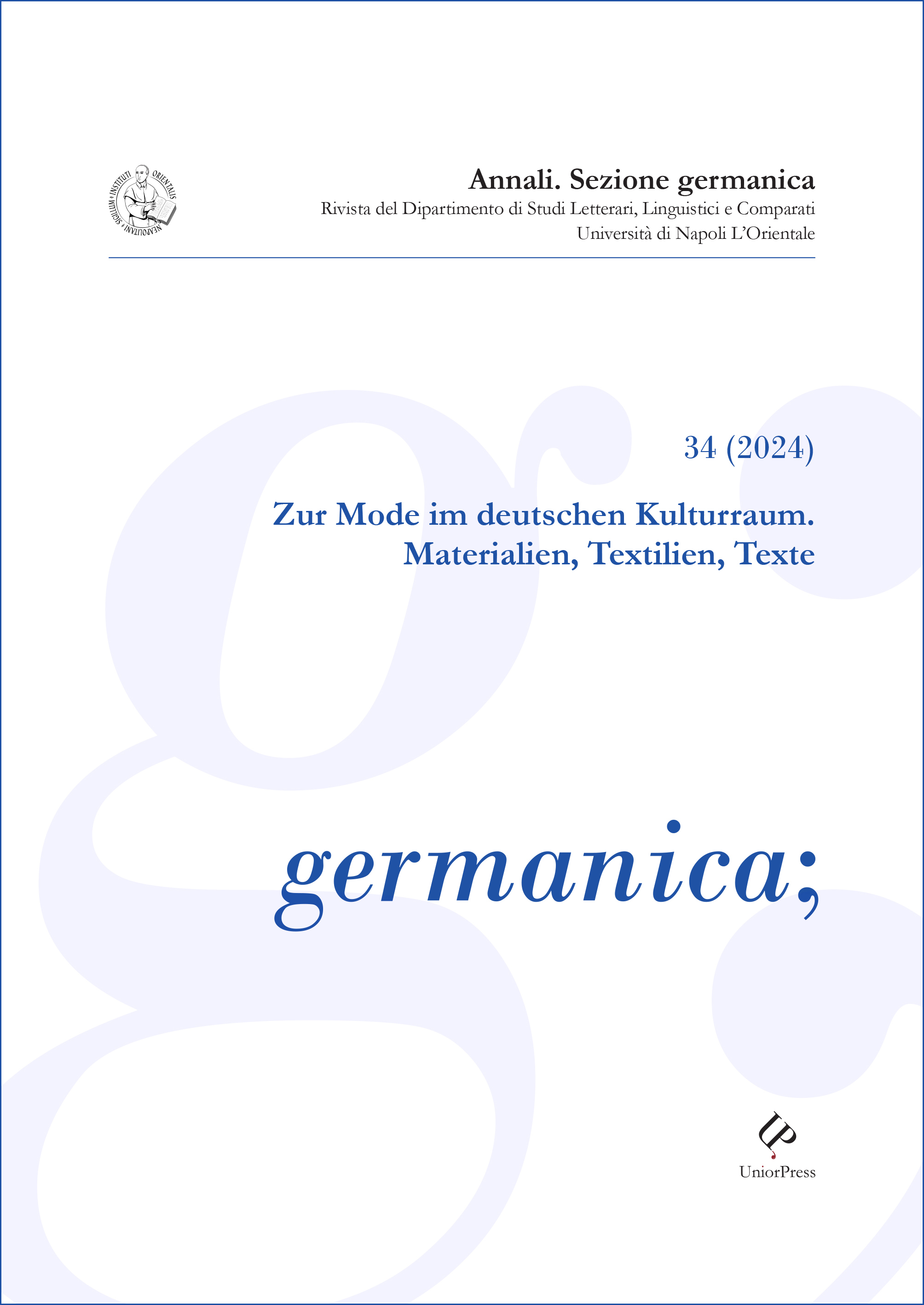Der Samtrock des Feldherrn Tilly (1559-1632)
Parole chiave:
Tilly, Guerra dei Trent’Anni, casacca, diagramma dei modelli, sartoriaAbstract
Johann Tserclaes, conte di Tilly, fu il comandante militare di maggior successo durante la Guerra dei Trent’Anni. Nel 1610 divenne Generale maggiore dell’esercito del duca Massimiliano I di Baviera e, nel 1630, fu nominato anche Feldmaresciallo dall’imperatore Ferdinando II. Un anno più tardi, a Tilly fu attribuita la responsabilità del devastante saccheggio di Magdeburgo. Infine, nel 1632 venne ferito nella battaglia di Rain am Lech e morì due settimane dopo a Ingolstadt. La sua casacca, realizzata in velluto viola scuro e decorata con passamaneria, è uno dei pezzi più importanti della rinomata collezione di tessili e abiti storici del Museo Nazionale Bavarese di Monaco di Baviera. L’analisi accurata del capo prende in esame il taglio, i materiali e le tecniche sartoriali impiegate. Il confronto tra l’indumento esistente e le fonti iconografiche e archivistiche consente di identificarlo come una casacca occidentale, di taglio tipicamente occidentale, realizzata nello stile ungherese allora di moda, e di datarne la produzione con maggiore precisione.
##submission.downloads##
Pubblicato
Come citare
Fascicolo
Sezione
Licenza
Copyright (c) 2025 Johannes Pietsch

TQuesto lavoro è fornito con la licenza Creative Commons Attribuzione 4.0 Internazionale.
Gli autori che pubblicano su questa rivista accettano le seguenti condizioni:
- Gli autori mantengono i diritti sulla loro opera e cedono alla rivista il diritto di prima pubblicazione dell'opera, contemporaneamente licenziata sotto una Licenza Creative Commons che permette ad altri di condividere l'opera indicando la paternità intellettuale e la prima pubblicazione su questa rivista.
- Gli autori possono aderire ad altri accordi di licenza non esclusiva per la distribuzione della versione dell'opera pubblicata (es. depositarla in un archivio istituzionale o pubblicarla in una monografia), a patto di indicare che la prima pubblicazione è avvenuta su questa rivista.
- Gli autori possono diffondere la loro opera online (es. in repository istituzionali o nel loro sito web) prima e durante il processo di submission, poiché può portare a scambi produttivi e aumentare le citazioni dell'opera pubblicata (Vedi The Effect of Open Access).


